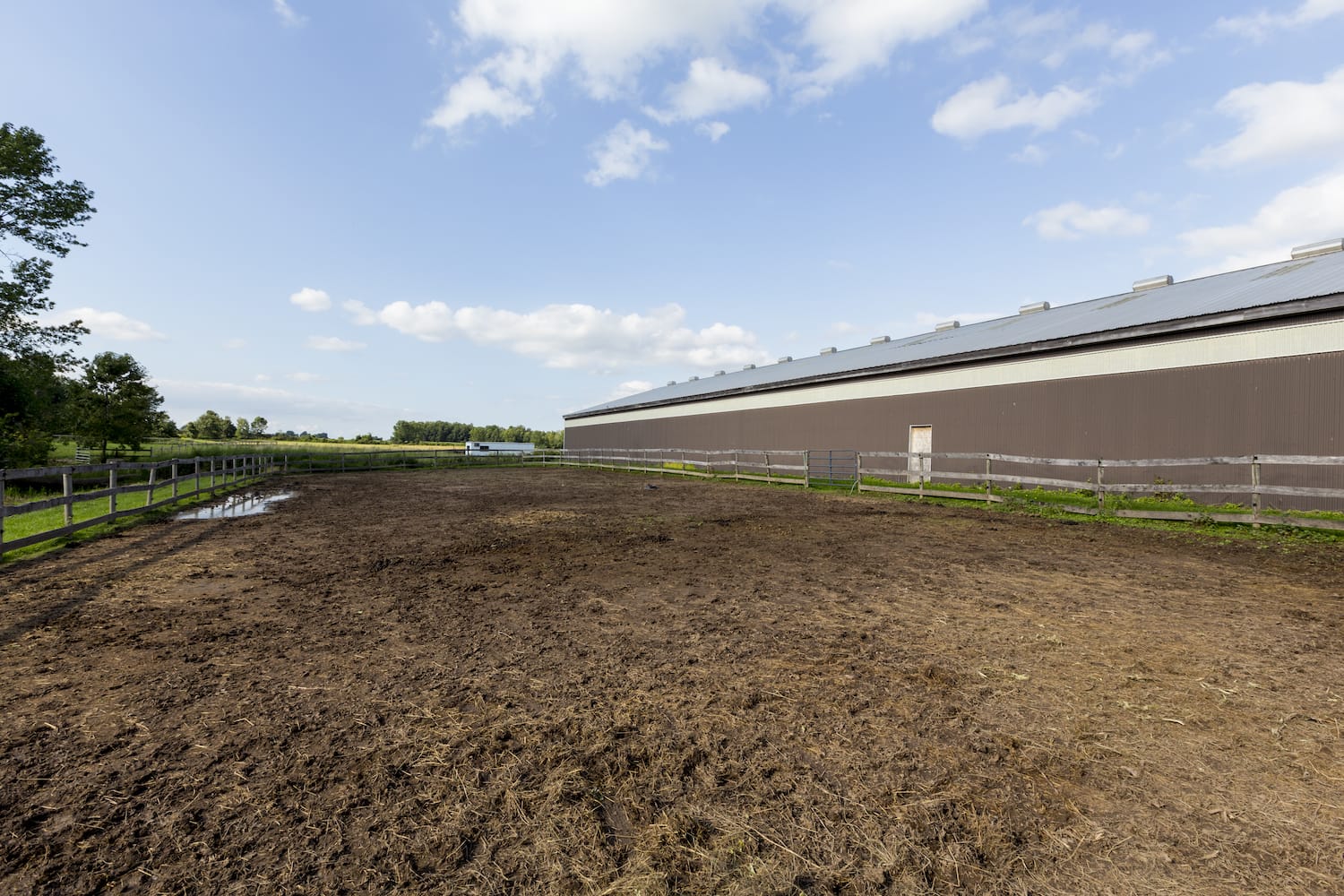Article Summary:
Waterlogged paddock grazing can cause substantial 'pugging' damage to pastures and soils. Over the next four to eight months, this damage can lower pasture use by up to 50% and pasture yields by 20–80%. Furthermore, these circumstances can raise the risk of lameness, mastitis, and magnesium deficiency in animals. In this article, we'll go through several low-cost, practical management solutions for reducing the impact of pugging.
- Grazing on a 'case-by-case' basis
- Other grazing methods
- Paddocks and standoff zones should be sacrificed
- Supplemental feeding methods
- Summary
1. Grazing on a 'case-by-case' basis
This is the most practicable and effective grazing technique for most farms during extended rainy circumstances.
Cows graze on a pasture for a short period, usually two to four hours, before being transported to a standoff area, such as a sacrifice paddock or other hard standing area, for the remainder of the day.
To be successful, the herd must be given enough tall and dense pasture (e.g., 2,500–3,000 kg DM/ha) to allow for large and quick pasture intakes.
Cows will typically absorb 70% of their daytime pasture intake in the first two hours of grazing and 77%-80% after four hours.
Pugging damage is usually small within four hours, with the majority of the damage occurring four to 10 hours after the start of grazing.

2. Other grazing methods
Other grazing practices, when employed together, can lessen the danger of pugging injury.
- Separate the day and night feed by allocating around two-thirds of the 24-hour pasture allocation for the day and a third for the night. During the night, cows sleep more and wander less.
- Grazing the paddocks from the back first, utilizing a temporary sacrificial alley made of electric fence to keep cows from wandering through the front.
- Whenever possible, back fence off previously grazed areas. The more moist soil is walked on, the more damage it causes to the pasture and the soil structure.
- Consider moving the fence in the designated grazing area two to three times per day.
- If possible, use different gateways to bring cows in and out of the paddock.
- Grazing the grassland in square or rectangular blocks rather than in long, narrow strips
- Grazing rotation slows to match pasture growth rates. Ideally, you want your cows to be able to access a lot of pasture.
- (e.g., at least 2,500 to 3000 kg DM/ha) and 4–6 cm between clumps for post-grazing heights.
- Resist the urge to shorten the projected rotation length. Instead, stick to your game plan.
- Grazing paddocks with a high likelihood of damp soil early in the season.
3. Paddocks and standoff zones should be sacrificed
A standoff area is necessary for 'on-off' grazing when cows walk from the paddock. A sacrifice paddock is the most basic and cost-effective alternative for most farms.
Ideally, this should be a paddock with better-drained soils on higher ground, run-down grassland in need of restoration, and away from streams and riparian zones.
Other areas where you can keep cows at bay include:
- Laneways: should only be used as a temporary solution because they can cause severe damage to the track surface and hooves.
- Feed pads and the dairy yard: cows need at least 3.5 m2/cow of space to lie down, or 5 m2/cow if they are on them for more than two days.
- Specially constructed confinement zones or loafing pads

4. Supplemental feeding methods
Supplements should be used in rainy conditions to aid in maintaining a moderate grazing rotation and ensure that cows are well-fed, especially during extended wet periods.
Feeding supplements ensure animals are more satisfied and do less roaming around the field.
In other words, well-fed cows generate less pugging damage.
Feed supplements in the dairy, on the feed pad, or in other locations. For example, if you're feeding in the paddock, put out the feed before the cows arrive, and if you're feeding tiny amounts, feed it under an electric wire.
So, next time you're dealing with damaged soil, remember that the herd is put under additional stress by prolonged damp and muddy weather for animal welfare.
Increased stocking rates in sacrifice paddocks can exacerbate mastitis, lameness, and magnesium insufficiency. Therefore, keep an eye on all of your cattle and fix any problems as soon as possible.
Summary
When soils are saturated, it is crucial to take measures to prevent pugging damage. Pugging damage is caused by cows walking on wet ground and can lead to mastitis, lameness, and magnesium insufficiency.
There are several ways to reduce the risk of pugging soil damage, including grazing in short strips, grazing from the back of the paddock first, using different gateways to bring cows in and out of the paddock, and feeding supplements.
If possible, use a sacrifice paddock to prevent damage to other pasture areas.
Remember to keep an eye on all of your cattle and fix any problems as soon as possible.
Until we meet again, Happy Grazing!
- The Dedicated Team of Pasture.io, 2022-05-24